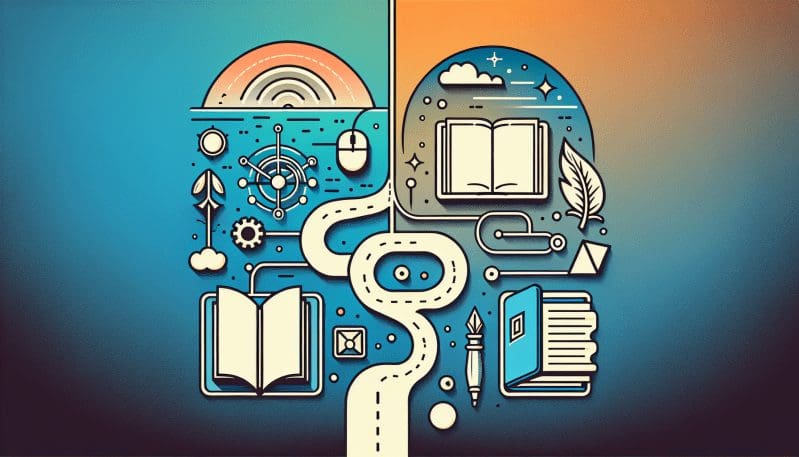The Evolution of Continuous Learning in the Digital Age: Navigating the Crossroads of Innovation and Tradition
- Home
- The Evolution of Continuous Learning in the Digital Age: Navigating the Crossroads of Innovation and Tradition
- Editors Desk
- March 29, 2024
- 0 Comments
In an era where the conveyor belts of technology and innovation move at breakneck speeds, the concept of ‘continuous learning’ has vaulted from a corporate catchphrase to a fundamental workforce necessity. The digital age has not only transformed how we work but also how we learn, pushing both individuals and organizations to ride the crest of an ever-evolving knowledge wave just to remain afloat.
Gone are the days when one could rely solely on the education acquired in traditional settings to navigate the entirety of a career. The contemporary worker finds themselves at the intersection of historic work ethics and groundbreaking digital tools—a junction where innovation meets tradition. At this crossroads, the most pressing question emerges: How can we harmonize the old with the new to create a learning paradigm that is both progressive and effective?
Digital platforms have emerged as a pivotal component of employee development. From e-learning modules to virtual reality simulations, they offer agile and personalized learning experiences that transcend the constraints of time and location. This democratization of knowledge has been further accelerated by the gig economy, where learning is not just an institutional offering but an individual imperative.
However, this transition is not without its challenges. The sheer pace of technological change can make the task of continuous learning seem Sisyphean. Employees may feel overwhelmed, and not all are ready or equipped to embrace digital upskilling. On the other hand, employers who grasp the mantle of change and foster a culture of learning can harness the full potential of their workforce and ensure organizational longevity.
Balancing the old with the new requires a nuanced approach. It is not about wholly discarding traditional learning methods, which have stood the test of time, but rather integrating them with the flexibility and accessibility of digital solutions. For instance, mentorship programs that leverage video conferencing technology can combine the human touch with the convenience of remote communication.
This balance is especially crucial for inclusivity and accessibility in learning. As companies strive to equip their workforce for the future, they must ensure that opportunities are equitable. This means recognizing diverse learning styles, addressing the digital divide, and building pathways for all employees to upskill, regardless of their starting point.
As organizations navigate this landscape, a strategic approach to continuous learning is vital. Learning and development initiatives must be ingrained in the company culture, and not just an afterthought. This involves aligning learning objectives with business goals, incentivizing learning achievements, and equipping managers to be learning champions.
The broader economy stands to benefit from a workforce that is resilient, adaptable, and skilled. As automation and AI reshape industries, the emphasis on continuous learning will differentiate the organizations that thrive from those that become obsolete. Learning is no longer just a ladder to career advancement; it is the very ground beneath an organization’s feet.
In conclusion, the interplay between innovation and tradition in the realm of continuous learning is not just about maintaining relevance in the digital age. It is about shaping a workforce that is future-ready and capable of steering the ship of progress. By integrating continuous learning into the fabric of workforce development, organizations can prepare a fertile ground for growth, innovation, and a robust economy. The ultimate goal is to create an ecosystem where learning is as natural and essential as the work itself.


Leave A Comment